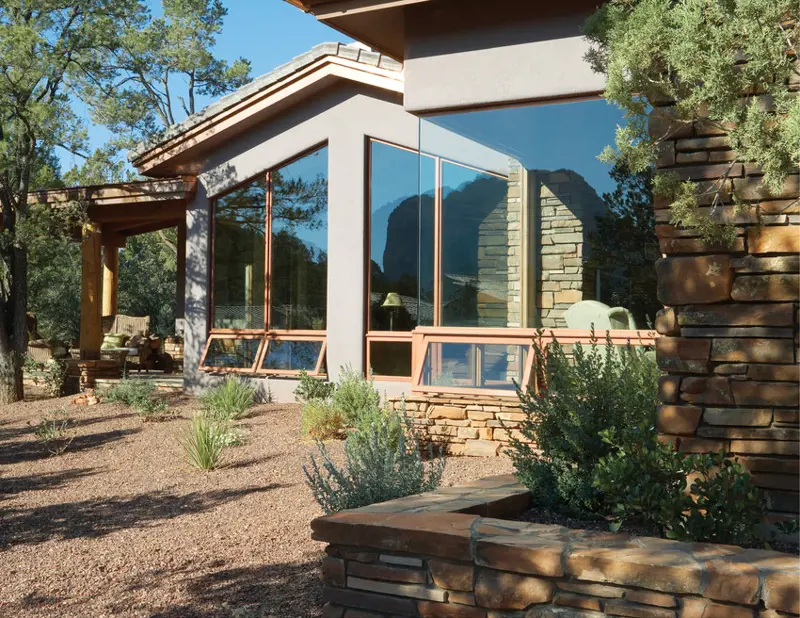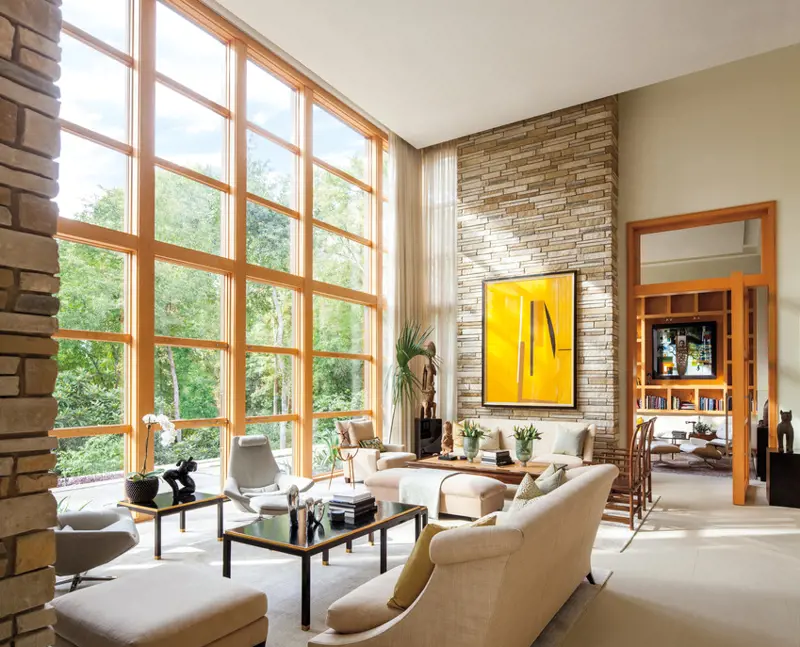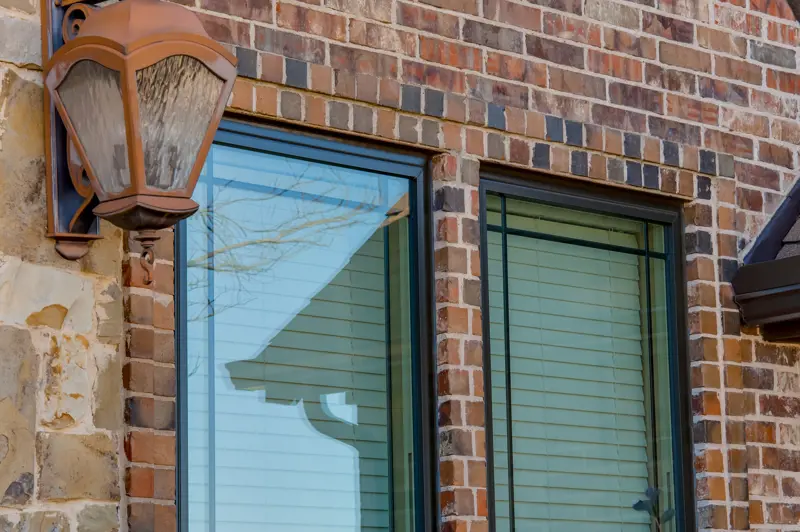
Window Styles for Tudor Houses
Tudor homes have a very distinct look. If you are remodeling or building a new house in this style, it will be important to use classic Tudor elements even if you are modernizing the house. We'll focus on Tudor style and Tudor window options in this post. Keep reading for an introduction to Tudor architecture and examples of Tudor homes.
Use the links below to skip ahead in this post:
What is Tudor Style?
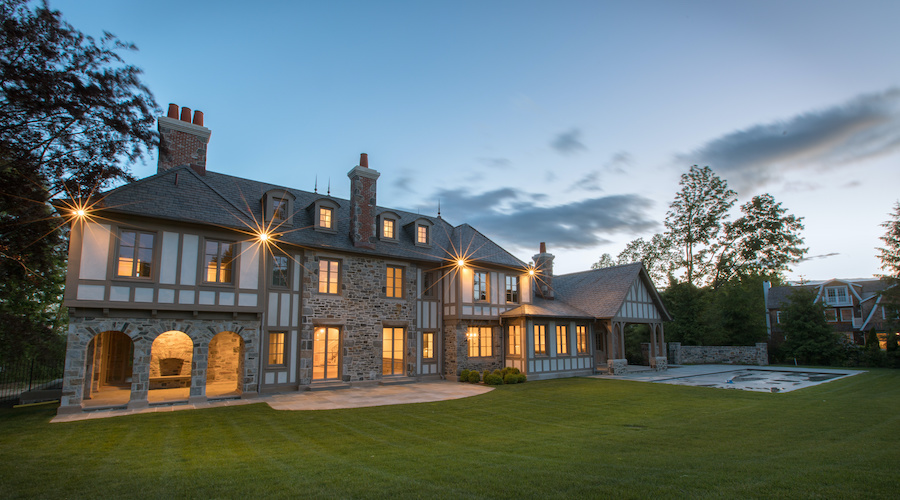
Imagine a Medieval English building from the Tudor period of 1485 and 1603. The dark exposed timber, the lattice windows, and the gothic charm inspired Tudor architecture's emergence in U.S. neighborhoods during the late-19th century. Tudor architecture was associated with the Arts and Crafts movement, much like Prairie and Craftsman architecture. You can see the similarity in the exposed woods, solid masonry, unique decorated details, and fine handiwork around the home.
American builders and homeowners lost interest in the Tudor style after World War II. During this time trends shifted to more American styles such as Colonial Revival architecture. Despite the change in trends, you can find Tudor homes in original and modern variation across the country. You're more likely to find Tudor architecture in the older suburbs of the Midwest and Northeast.
Features typical of Tudor architecture include:
- Half timbering on the exterior, with interspersed walls of stucco, brickwork, or stone
- Steeply pitched roofs, sometimes with dormer windows
- Embellished doorways with transom windows or other Renaissance detailing.
- Groupings of tall, small windows, bay windows
- Decorative lattice grids on windows
- Asymmetry
- Two to three stories
- Cross gables on the exterior
- Tall ornate chimneys, sometimes with decorative features.
- Color palette - cream, brown, black, white, red (brick)
- Overhangs from the second for over the ground floor wall boundary
Windows for Tudor Houses
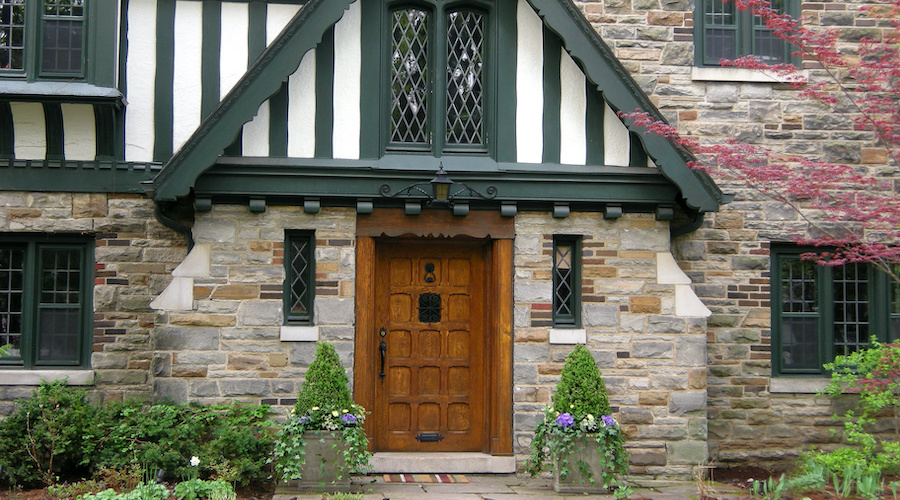
The window styles used varied but the most popular were casement windows. Windows on Tudor homes were narrow, tall, and often clustered together. The defining feature of Tudor windows is the use of grids, particularly lattice or diamond-shaped grids. Historically, glass was only a privilege that the wealthy could afford and it was made in small units. Households with more modest income used polished horn, cloth, paper, or shutters to cover their window openings. Today, glass is more affordable and made in large sheets so grids are purely decorative.
- Casement windows offer full ventilation as they open outwards and are hinged on the side. Consider the way this style opens when using them in groups.
- Double-hung windows are also used in Tudor style homes, you can also opt for the single-hung style. Double-hung have two operable sashes that slide up and down and give you greater control over ventilation.
- Picture windows are also common in Tudor houses. In the photo above, two small picture windows are set on either side of the front door. This fixed window is also used in window configurations that use operable windows. Adding picture windows to a set of windows allows for more natural light and creates a grander look.
- Bay windows are found in many Tudor homes and can be configured with a collection of windows styles. Casement, hung, and picture windows can all be used in bay window configurations. Bay windows project outwards from the home walls with a semi-round appearance.
- Colors for Tudor windows are rich, warm, and dark so wood is the favored window material. You can also use dark color windows that complement the rest of the color scheme. Whether you choose a wood window or a high-performance vinyl, most companies offer suitable finish options.
Andersen is the perfect partner for architecturally authentic windows and doors.
EXPLORE ANDERSEN WINDOWS
Featured Property: The Joe Beutell House
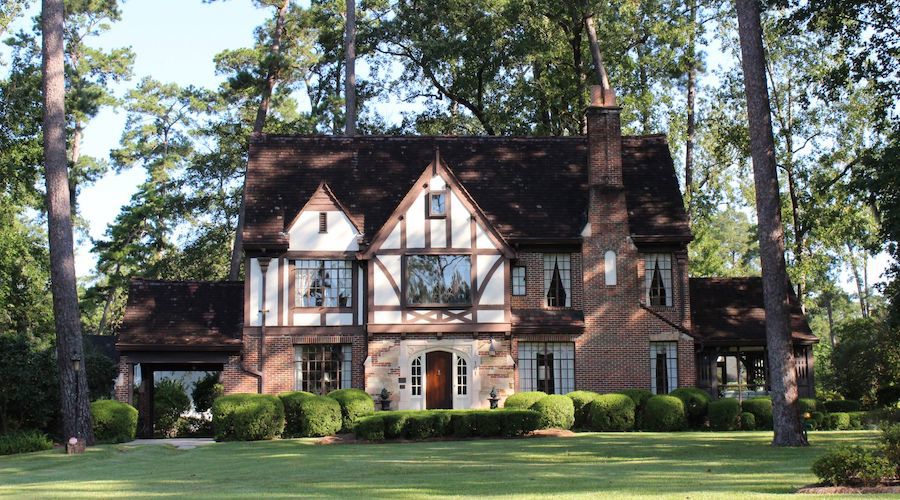
An architectural firm, Daniell and Beutell↗, built two unique Tudor style structures in the early 20th century in Georgia. One is the 1930s Joe M Beutell House↗ with its exposed beams and brickwork. The windows have a tight colonial grid pattern. The use of this grid pattern creates a window that looks like it's made up of several small units of glass.
The ornate entrance, high chimney, and steep roof are quintessential elements of Tudor style. The Joe Beutell House presents a great example of this form during its hay-day. It's also worth noting that it's recorded on the National Register of Historic Places↗.
Tudor Style Houses, Love It? Update It.
Tudor homes are intriguing and other-worldly. If you've found an old Tudor home to revamp, or are launching into a modern revival of the style don't overlook the details in your windows. We recommend working with a company like Andersen. Andersen in particular offers an architectural collection of windows with superior craftsmanship. Choose windows with Energy Star-rated glass packages and colonial or diamond patterned grids.
Oops!
We don't currently serve your area but do want to help you plan your project. Try our Build & Price tool to get an idea of window & door costs within DFW. Your area may be higher or lower but at least you'll have some idea of the price.
Thanks for stopping by.




